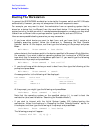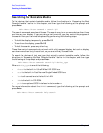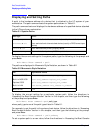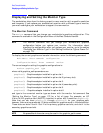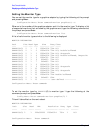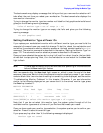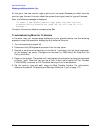
168 Chapter6
Boot Console Handler
Displaying and Setting Paths
Displaying and Setting Paths
A path is the hardware address of a device that is attached to the I/O system of your
workstation. The path command sets the system paths shown in Table 6-1.
The path command sets and displays the hardware address of a specified device attached
to the I/O bus of your workstation.
To display the current settings for the system paths, type the following at the prompt and
press
Enter:
Main Menu: Enter command > path
The paths are displayed in Mnemonic Style Notation, as shown in Table 6-2.
To display the current setting for a particular system path, follow the directions in
“Accessing the Boot Console Handler” earlier in this chapter, and then type the following
at the prompt and press
Enter:
Main Menu: enter command > path path_type
where path_type is one of the path types listed in Table 6-1.
For example, to get the path to the primary boot device, follow the directions in “Accessing
Boot Console Handler” earlier in this chapter, and then type the following at the prompt
and press
Enter:
Main Menu: Enter command > path primary
To set a system path to a new value, follow the directions in “Accessing the Boot Console
Table 6-1. System Paths
Path Type Device
primary or pri Your workstation’s default boot device (usually the root disk)
alternate or alt Your workstation’s alternate boot device (usually a DDS-format tape
device)
console or con Your workstation’s primary display device
keyboard or key Your workstation’s primary ASCII input device
Table 6-2. Mnemonic Style Notation
I/O Specification Format
Built-in LVD SCSI fwscsi.
scsi_address
.
logical_unit_number
Built-in NSE SCSI scsi.
scsi_address.logical_unit_number
Optional SCSI pci
n
.
scsi_address.logical_unit_number
Built-in LAN lan.
server_address
.
init_timeout
.
io_timeout
Built-in IDE IDE







